The settings menu is a bit confusing.
The Sony Bravia XBR-65A8H looks as stunning as the visuals this TV reproduces. Its industrial design is both understated and visually expressive. The monolithic look with a reduced trim will not distract you from the picture. The model delivers three-dimensional, nuanced, and accurate colors, with refined and detailed shadows and skin tones.
65" (55" also available)
3840 x 2160
120 Hz (X-Motion Clarity™ technology)
Yes (built-in Wi-Fi)
No
Bluetooth, 3 x USB, 1 x Ethernet port (RJ-45), 4 x HDMI, 1 x Composite in, 1 x Optical out, 1 x Headphones jack, Ant. in
30 W (2 speakers and 2 woofers)
1 year
Dolby Vision IQ will automatically adjust the picture settings, taking the content and the ambient lighting into account. OLED Motion Pro will be reducing stuttering, making the on-screen action smooth and fluid. The bezels are almost nonexistent, so the visuals become even more immersive.
The cord is pretty short (around 5 feet).
The LG OLED55CXPUA treats games and movies with the respect these mediums deserve. Packing multiple gaming features, this TV will elevate the immersion levels, producing the fastest-moving visuals in captivating detail, while the 9 picture modes and the top-notch upscaling tech will make motion picture come alive.
55" (48", 65", 77" also available)
3840 x 2160
120 Hz
Yes (built-in Wi-Fi)
No
Bluetooth, 3 x USB, 1 x Ethernet port (RJ-45), 4 x HDMI, 1 x Composite in, 1 x Optical out, 1 x Headphones jack, Ant. in
40 W (2 speakers and 2 woofers)
1 year
The Object Tracking Sound tech makes the audio more immersive. The Tizen platform uses a neat and tidy two-tier layout that enables comfortable browsing without dominating the screen. The black levels are consistent. The direct full-array backlighting with enhanced anti-reflection and elevated contrast makes the content bright even under direct sunlight.
The remote is inconvenient.
The Samsung QN55Q80TAFXZA can tussle with the company's flagship TVs and even come out victorious at times. The screen delivers vibrant colors, clean details, inky blacks, and convincing primaries. The 60-watt speakers are nothing to sneeze at as well, producing clean yet expansive audio that easily fills sizable rooms.
55" (49", 50", 65", 75", and 85" also available)
3840 x 2160
240 Hz
Yes (built-in Wi-Fi)
No
Bluetooth, 2 x USB, 1 x Ethernet port (RJ-45), 4 x HDMI, 1 x Optical out, Ant. in
60 W (4 speakers and 2 woofers)
1 year
The speakers are quiet.
Despite a faint economy-model vibe, the TCL 55R635 is much more capable than low-end OLED TVs usually are. The model is not bad at upscaling HD content, the black levels are respectable, the haloing is minimized, and the MiniLED backlighting system delivers an excellent contrast between blacks and whites.
55" (65" and 75" also available)
3840 x 2160
120 Hz (480 Natural Motion technology)
Yes (built-in Wi-Fi)
No
1 x USB, 1 x Ethernet port (RJ-45), 4 x HDMI, 1 x Composite in., 1 x Optical out, 1 x Headphones jack, Ant. in
16 W (2 speakers)
1 year
The ECO sensors identify the picture and, depending on ambient lighting, automatically adjust the brightness. The Multi View Mode will let you watch content from two sources at the same time. The Composite input will allow you to work with legacy devices. The TV is compatible with Alexa, Bixby, and Google Assistant.
The legs are not necessarily stable.
Provided you don't mind the limited viewing angle, the Samsung QN50Q60TAFXZA will give you above-average colors; bright and rich but also accurate (when not viewed at a sharp angle). Meanwhile, the integrated speakers produce impactful audio that remains clean and consistent even at the highest volume setting.
50" (43", 50", 58", 65", 75", and 85" also available)
3840 x 2160
120 Hz
Yes (built-in Wi-Fi)
No
Bluetooth, 2 x USB, 1 x Ethernet port (RJ-45), 3 x HDMI, 1 x Composite in, 1 x Optical out, Ant. in
20 W (2 speakers)
1 year
This site is a free online resource that strives to offer helpful content and comparison features to its visitors. Please be advised that the operator of this site accepts advertising compensation from certain companies that appear on the site, and such compensation impacts the location and order in which the companies (and/or their products) are presented, and in some cases may also impact the scoring that is assigned to them. The scoring that appears on this site is determined by the site operator in its sole discretion, and should NOT be relied upon for accuracy purposes. In fact, Company/product listings on this page DO NOT imply endorsement by the site operator. Except as expressly set forth in our Terms of Use, all representations and warranties regarding the information presented on this page are disclaimed. The information which appears on this site is subject to change at any time. More info
Sony Bravia (XBR-65A8H)
Industrial Design
Coming at almost $2,000, the Sony Bravia XBR-65A8H starts approaching that premium, high-end segment where TVs make virtually no compromises since the price allows them to do so.
Using its appearance as a springboard, the model sports a unique industrial design that's somehow both understated and visually expressive. The bezels are thin and pretty much nonexistent, with the usual skinny bits that OLED TVs come with finished beautifully. They're also sturdy and robust, not unlike the remaining heavy-duty bodywork that houses connections, processors, and panel drivers.
What's interesting here is that, choosing the opposite direction, this deep section's unapologetically muscular and minimalistic, adding to the model's design appeal rather than looking like a necessary evil. From the front, the TV has an attractive monolithic look with very little trim, so you won't feel distracted from the on-screen action.
Even the remote is good-looking, with a sleek metal-like finish but also a spacious layout and responsive buttons, nothing like the cramped layouts with flush buttons that Sony TVs' handset generations were offering a decade or two ago.

Bitmapping and Pixel Contrast Booster
As attractive as this TV is, what sells the product is its performance. First, its HD/SDR reproduction is awesome. When upscaling sub-4K content, most TVs make the picture strained and noisy. This model, on the other hand, adds a high level of detail and texture seemingly effortlessly, even when working with grainy, low-quality content. The color judgment that the TV applies to each upscaled pixel is excellent as well, not making them as coarse as they usually look with less impressive upscaling engines.
Moving on, the model is even better when it comes to 4K and HDR content. The colors look three-dimensional, natural, and nuanced. Skin tones, shadows, and dark colors are delivered refined and detailed. In the meantime, the company's Bitmapping tech smoothes away the striping artefacts that HDR can cause sometimes. Native 4K media always look sharp and the usual sharpness-related artefacts like ghosty, stressy object edges, noticeable source noise, or pronounced grain.
We can pivot towards the Pixel Contrast Booster that opens up the luminance ‘gap’ between the darkest and lightest pixels, enhancing local intensity. We can also address the Dynamic Contrast Enhancer enhancing and extending light levels. We can discuss the 30-watt speakers not just playing second fiddle to the picture but immersing you in the on-screen action with a rounded-out mid-range and an excellent bass extension. But we've already seen these attributes from the Sony Bravia series before. So, assuming you're fine with the price and don't mind the middling peak brightness that still plagues Sony OLED TVs, this screen is the model to beat. Also, you can choose between 55 inches and 65 inches.

Additional Info
| Last updated price | $1,849.00 |
| Stock | In stock |
| ASIN | B084KQLVKH |
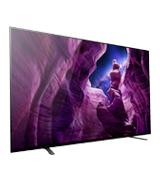
LG (OLED55CXPUA)
Approaching Perfection
The people behind the LG OLED55CXPUA are suggesting that this TV will let you see how perfect OLED models can be. Are they exaggerating? Well, to some extent, sure, but not as much as you would expect. No, even by OLED TVs standards, this one's colors are off the charts, unveiling perfect blacks and the brightest whites. Talking about OLED models colors gets pretty repetitive with time though, so this is not the route we'll go. Instead, let's choose the audio route first.
Normally, budget OLEDs are seldom offering impressive audio, which is understandable considering that cutting important corners is unavoidable when you're producing affordable OLED panels. Still, without the right sound, even the most stunning visuals cannot immerse you in the on-screen action alone. Bringing Dolby Vision IQ, this TV somewhat solves the audio issue, automatically adjusting the picture settings depending on the ambient lighting conditions and content genres. But more important than this feature is the Dolby Atmos one, surrounding you with multi-dimensional audio that flows all around you (or so it seems). Of course, these features are irrelevant without the 40-watt sound setup, packing two speakers and two subwoofers that produce rich and detailed tones, making the audio deep, spacious, and impactful.

Treating Games and Movies Almost Equally
OLED TVs are usually solid gaming screens to begin with. Still, this TV takes its gaming disposition even more seriously. First, the model's G-Sync compatible, meaning that people with Nvidia graphics card can enjoy gameplay without pixel distortion, motion jitter, and noticeable image artifacts, with the tech minimizing dropped frames and chopped visuals. Second, you have the TV's 1ms response time, enabling competitive gaming without any handicaps. Besides these two, the product's contributing HDR gaming, proving that high-dynamic-range imaging does not pertain movies alone, making the on-screen action much more immersive and visually expressive.
But, as much as this TV loves games, it loves movies even more, especially with the Filmmaker mode respecting the craft and translating the directors' cinematic vision onto the screen, using automatic picture and CPU settings that keep the colors and the contrast as close to the directors' vision as possible.
We can talk about OLED Motion Pro, the tech that makes sure the motion remains fluid, reducing stuttering that LCD and LED TVs usually miss. We can talk about practically nonexistent bezels, making this device look sleek and elegant. We can mention the excellent upscaling tech that makes non-4K content look almost like legit 4K content. But, even without these details, this TV for gaming and general entertainment has already arrived and is here to stay, becoming the model to beat within its class.
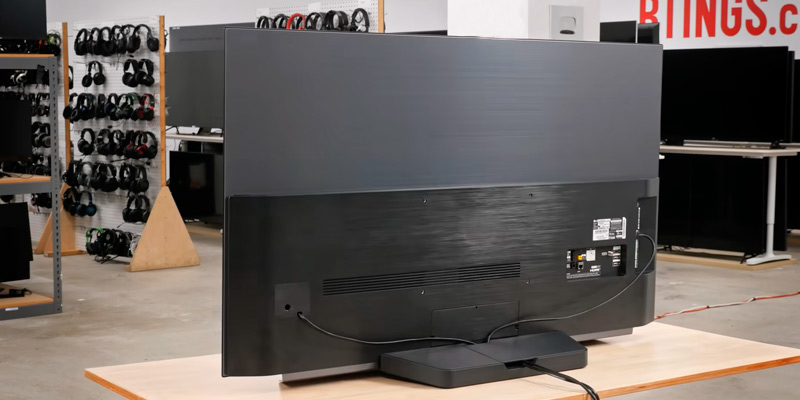
Additional Info
| Last updated price | $0.00 |
| Stock | In stock |
| ASIN | B0829RYP8V |

Samsung (QN55Q80TAFXZA) [Q80 Series]
Reasonable Indeed
Despite, at this time, occupying the 'Reasonable Price' seat, the Samsung QN55Q80TAFXZA is not the bargain that we usually put there. No, this is an expensive TV, but the price is, indeed, reasonable, considering everything that this screen is offering. To initiate a conversation, the SDR picture modes that always accompany OLED TVs include Standard, Dynamic, Natural, and Movie, with the last mode somewhat crushing the blacks but also making the image more contrasty. You can play with these modes or go with the company's Intelligent mode. Delivering adaptive brightness as well as adaptive sound, this mode will let you manage the screen settings without delving into the menus.
As always, the Q80R line's Image interpolation tech is no joke, but we would recommend treading carefully since the tech can also make the 'soap opera' effect quite noticeable. Then, there's the Ultra Viewing Angle tech, trickling down from Samsung flagship OLED TVs. This technology is pretty great at maintaining colors and contrast even when they're viewed from a sharp angle. Of course, aside from movies, the TV also features a Game mode, with multiple settings that will enable you to reduce input lag, highlight dark scenes, etc.
From the 4K reproduction standpoint, this TV is even more impressive. The screen linearity is excellent and the black level performance is consistent. Real-world HDR content looks bright and snappy. The color fidelity is awesome, featuring convincing primaries as well as natural skin tones. There's minimal blooming and, generally speaking, the colors come out rich and expressive.
![Review of Samsung (QN55Q80TAFXZA) [Q80 Series] 55" OLED 4K UHD Smart HDR TV (2020 Model) - Bestadvisor Review of Samsung (QN55Q80TAFXZA) [Q80 Series] 55" OLED 4K UHD Smart HDR TV (2020 Model)](http://cdn.bestadvisor.com/reviews/53/66/5366727c34cd21855de4ccfede884558.jpg)
60-Watt Speakers
Samsung TVs are no strangers to powerful speakers but the ones that this model comes armed with have surprised us nonetheless. Drawing and outputting 60 watts (between 4 speakers and 2 subwoofers), these downward-facing speakers produce punchy mids and brilliant highs. There's a warm tilt but the sound is usually clean and expansive, with the robust output easily filling sizable rooms.
Appearance-wise, this TV is a little chunky, but we're okay with its slight heft. The build quality here is a little less refined compared to the model's step-up stablemates, but its appearance is still plenty respectable, with an elegant textured plastic back and tidy T-stand.
Tizen, Samsung's Smart TV platform, has not received major changes here. The familiar two-tier layout looks neat and tidy, letting you browse between countless options without dominating screen real estate. Aside from the presets, the platform will let you add one customizable bar where you can add and remove different streaming apps.
Bottom line, the Samsung QN55Q80TAFXZA almost matches the company's range-topping Q90R line, delivering inky blacks, vibrant colors, and clean details. What's more, you can choose not just the line's usual 49 inches, 50 inches, and 55 inches, but also 65 inches, 75 inches, and even 85 inches.
![Samsung (QN55Q80TAFXZA) [Q80 Series] 55" OLED 4K UHD Smart HDR TV (2020 Model) in the use - Bestadvisor Samsung (QN55Q80TAFXZA) [Q80 Series] 55" OLED 4K UHD Smart HDR TV (2020 Model) in the use](http://cdn.bestadvisor.com/reviews/ab/0f/ab0fba1647f4291c93d6b3b098fcdc63.jpg)
Additional Info
| Last updated price | $1,297.99 |
| Stock | In stock |
| ASIN | B084RGZ3P7 |
![Samsung (QN55Q80TAFXZA) [Q80 Series]](http://cdn.bestadvisor.com/reviews/88/4f/884f6ada29acfc72498097406d649194.png)
TCL (55R635)
A Huge Improvement
The TCL 55R635 shines as a beacon of hope for budget QLED TV buyers. While its motion handling is not great and the peak brightness is pedestrian at best, the TV offers excellent value nonetheless.
Where its dress sense is concerned, the TV is not necessarily slim but the bezels are practically nonexistent anyway. You can place the legs close, making the TV fit small tables or stands, or separate them, putting the legs at the outside corners to ensure stability. Furthermore, you can weave cables through these legs, creating a less chaotic space free from wires.
Spin the TV around and you will find the usual port arrangement, including one USB port, one Ethernet port (RJ-45), four HDMI inputs, one Composite input, one optical output, one headphones jack, and one antenna input. Of course, these are not the HDMI inputs that enable transferring 4K/120Hz and 8K signals, but the ports can work with 4K/60Hz or 1440p/120Hz.
Following in its predecessors' footsteps, this screen employs Roku TV, which is an egalitarian Smart TV platform with an impartial and capable search engine. Because Roku TV has no ties to the biggest streaming services, unlike Apple TV or Amazon TV, the platform will not be shoving ancillary streaming apps down your throat, supporting everything from Netflix, Hulu, Sling TV, and Amazon, to small-time channels like Pluto.tv, Tubi, Crackle, and others.

Calibrating Colors, Contrast, and Clarity
On the performance front, the TV offers improved black levels, contrast, and practically nonexistent haloing. The MiniLED backlighting system makes the clearest distinction between blacks and whites, while the AiPQ engine works overtime transforming HD content into 4K. Using three algorithms that calibrate colors, contrast, and clarity, the engine eliminates noise and grain, making upscaled media look almost identical to legit 4K content.
On a less positive note, gamers will feel conflicted with this TV. From one viewpoint, the model's motion rate pushes 120Hz. To add more, the screen supports Variable Refresh Rate. From a different viewpoint, at 120 fps, the resolution caps at 1440p, and the display does not support proprietary graphics cards' tech like G-Sync and FreeSync.
Reviewing the audio, the 16-watt speakers will not provide the spacious soundstage that 5.1 surround sound systems can give you but that's to be expected at this low-end price bracket.
In closing, the customers who are working with less than $700 but want to dip their toes into OLED/QLED panels will not find a better option than the TCL 55R635.
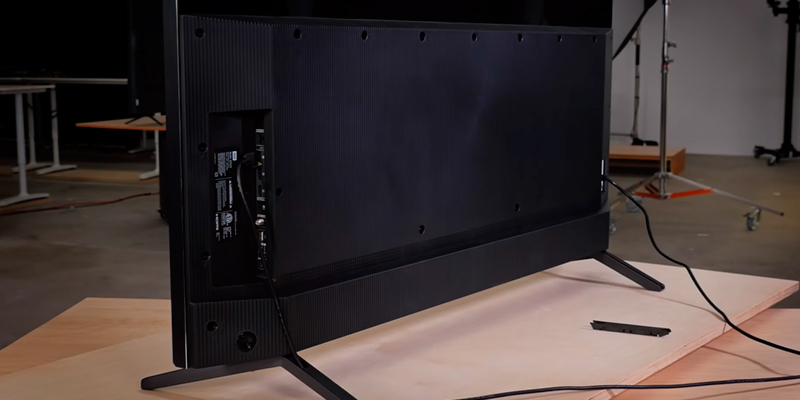
Additional Info
| Last updated price | $739.50 |
| Stock | May be out of stock |
| ASIN | B0885F5GMP |
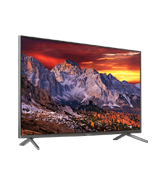
Samsung (QN50Q60TAFXZA) [Q60T Series]
Approaching Greatness
With the latest budget QLED lineup, Samsung giveth and Samsung taketh away, presenting panels that are good but not necessarily great. That being said, despite falling short, the Samsung QN50Q60TAFXZA starts approaching greatness, which is a pretty admirable feat given its economy disposition.
First things first, its footprint is narrow, and the bezels are slim. The dark plastic case that this TV's using feels sturdy, sporting a ribbon-like texture along the back. Of course, it is not quite as elegant as the metal cases that high-end TVs usually adopt, but the case does not feel or look cheap, so kudos to the people behind the screen anyway.
The boomerang-shaped feet are also sturdy, easily clipping into the bottom and providing a stable base. Having said that, because the feet are quite thin, the legs do not necessarily feel as reliable, so we would recommend choosing a steady surface.
The port lineup is fairly standard, including a Composite connection for legacy devices, an optical output for soundbars or receivers, three HDMI ports, two USB ports, an antenna input, an Ethernet port, and a Bluetooth module. Because they're hidden behind, you won't be able to access these ports without pulling the TV away from the wall, meaning that people who swap devices on a frequent basis should stick with the above-mentioned feet.
![Review of Samsung (QN50Q60TAFXZA) [Q60T Series] 50" OLED 4K UHD Smart HDR TV (2020 Model) - Bestadvisor Review of Samsung (QN50Q60TAFXZA) [Q60T Series] 50" OLED 4K UHD Smart HDR TV (2020 Model)](http://cdn.bestadvisor.com/reviews/3a/33/3a33af34847e34216fec84cc72effc91.jpg)
Realistic Flesh Tones
More often than not, the TV delivers good colors and sharp details. There's some blurring during fast action scenes but nothing to be alarmed about. With movies like Blade Runner 2049, the dystopian neon lights come out bright and rich, the dolphin pods look distinct and detailed, and the overall colors remain accurate. But, even when you move ~30 degrees to the side, reds start looking a little orange, while the movie's deep blues start transforming into light blues. The action usually looks sharp but, again, when the scenes ramp up, the visuals start losing crispness.
Between the company's usual picture presets (Dynamic, Natural, Standard, and Movie), the last one produces the most realistic flesh tones, so we'll suggest sticking with it when watching movies. Note that these presets enable motion smoothing, which is a feature we recommend disabling. With it, the action starts looking ultra-processed.
Examining audio, the 20-watt speakers can create a pretty wide sound. But, because they come without subwoofers, the bass output is minimal.
Long story short, at ~$1,000, the Samsung QN50Q60TAFXZA has almost no competition besides the TCL model that we've reviewed above.
![Samsung (QN50Q60TAFXZA) [Q60T Series] 50" OLED 4K UHD Smart HDR TV (2020 Model) in the use - Bestadvisor Samsung (QN50Q60TAFXZA) [Q60T Series] 50" OLED 4K UHD Smart HDR TV (2020 Model) in the use](http://cdn.bestadvisor.com/reviews/59/6e/596eec2fa656c43ec7a12da354eafb96.jpg)
Additional Info
| Last updated price | $744.99 |
| Stock | In stock |
| ASIN | B0849P657W |
![Samsung (QN50Q60TAFXZA) [Q60T Series]](http://cdn.bestadvisor.com/reviews/ad/4d/ad4daed4e6615db8e986ff8ceede1886.png)
What Is an OLED TV?
OLED TVs use organic LEDs to eliminate the pixels individually. We've covered the differences between these TVs and LCD panels in the OLED vs LED/LCD section, so we won't be focusing here on what makes these TVs better than most standard screens. Apart from everything we've discussed and reviewed there, OLED models are usually packing various solutions to neutralize the technology's unimpressive peak brightness and different modes to let you manage and manipulate the TVs' often numerous settings and features.
While people do not usually use these expensive TVs with desktop computers, the necessary interfaces are always there. Plus, sometimes, these screens even come equipped with G-Sync/FreeSync support to ensure smooth gameplay with very little pixel distortion. When that's the case, the mentioned screens might even be packing gaming monitors' techs and features like Dynamic Black Equalizer and so on.
Although OLED models usually come equipped with decent speakers, we would still recommend looking into these floor speakers to match the awesome visuals with equally impressive stereo.
What Features to Compare
Size and Resolution
OLED TVs are still TVs, meaning that things begin with the screen's size and resolution. As you would imagine, you can choose any size you want (from the usually long available list), as long you keep in mind that the more sizable panels cost more and you'll have to figure out where to put the newly purchased massive screen.
The gold standard last few years seem to have become ~60-inch panels (plus-minus 5 inches). The biggest reason why that's the case is that it's the perfect size to support the Ultra HD 4K resolution, large enough to see the difference between the increased number of pixels but not too large to make those pixels massive and individually identifiable.
Motion Rate
This is where things get somewhat tricky. Sure, there's no downside to having the most ludicrous motion rate (above 200 hertz). The issue here is that, first, these motion rates are partially bogus/intentionally misleading.
Second, you'll be watching movies, TV series, and YouTube clips on these screens, meaning that the content will be 24/24/<60 fps respectively. In other words, the screen might be refreshing 200 times per minute but the footage was not filmed with matching frame rates, so the TV will be refreshing the same pictures.
Sure, you can hook up these speedy TVs to expensive desktop rigs and play Fortnite/League of Legends/Overwatch at 200+ frames per second, that's where the screen's motion rate will prove beneficial but that's about it.
Smart TV
Even the least expensive OLED TVs cost about as much as mid-range LCD models, meaning that smart platforms are somewhat expected here and, more often than not, present. Roku TV, Tizen, and LG's webOS are arguably the best platforms since these do not prioritize subscription-based services before free ones.
Interfaces
There's nothing different here compared to most modern-day TVs. Generally speaking, OLED models come equipped with 3-4 HDMI ports, 2-4 USB ports, and the entire standard lineup, including Bluetooth, an Ethernet port (RJ-45), an Optical output, and more.
Sound
As we've already concluded, OLED panels are much more expensive compared to LCD TVs, meaning that these panels are usually adopting robust speakers. More often than not, these speakers are pretty good at separating lows, mid, and highs. Also, the more expensive models are packing superb bass response with excellent impact and solid extension.
OLED vs LED/LCD
More often than not, people are choosing between OLED and LED/LCD TVs these days (there are also QLED and such but we'll leave those since they're not as different and prevalent as these panels). The issue here is that these acronyms can bamboozle even some tech-savvy folk, let alone those customers who are not into these things. That's why we've decided to break down the differences between these panels and emphasize the screens' strengths and weaknesses.
OLED
Generally speaking, most customers switch from LCD and plasma TVs to OLED models, not vice versa. When that's the case, these customers seldom go back since the smooth and fluid yet, at the same time, vibrant and contrasty visuals are stunning initially. Also, these screens are usually as flat as wallpapers. How do these flat TVs work though?
Incorporating organic light-emitting diodes (OLED), these TVs are able to emit their own light, meaning that the backlighting issue is that there anymore. Also, OLED displays illuminate each and every pixel separately, meaning that you're able to manage the visuals at an individual pixel level.
Placing organic films between the screen's semiconductors and supplying them with an electrical current, the people behind these TVs let you switch the pixels on and off individually. The solution enables creating more brightness using less power and even makes total black possible.
These organic LEDs make the footage that features both complete darkness and extreme brightness (like star-filled night skies) look much more realistic than when LCD models reproduce the same footage. Of course, with unlimited contrast, the TV is able to produce the darkest blacks, the whitest whites, and everything in-between.
Last but not least, as the organic part suggests, these screens are more environmentally friendly than LCD TVs. The difference here is that you need to use the Nitrogen Trifluoride greenhouse gas to produce LCD models, which is not the case with OLED panels.
So, what are the downsides? Well, first and foremost, OLED TVs are usually much more expensive. Apart from that, the tech is relatively new, so we've no idea how long these panels last.
LCD
LCD panels have been around for quite some time now. As some people are already aware, these TVs use liquid crystals rotating polarized light, effectively acting as this light valve that illuminates all pixels at the same time.
More often than not, these TVs are really bright (provided you're not going with TN panels). The issue is that the brightness is uniform, making the visuals less realistic since that's not the case in real life. Also, these screens have limited contrast ratio, meaning that the blacks are not always that black and that the most extreme whites are not always accessible. The shadows are seldom as detailed too.
Aside from excellent brightness though, these TVs have upsides too, starting with the much more affordable price and ending with the fact that the colors are usually pretty rich and vivid.


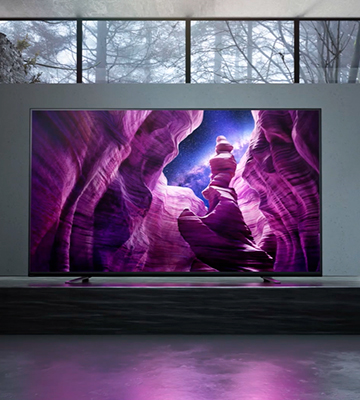
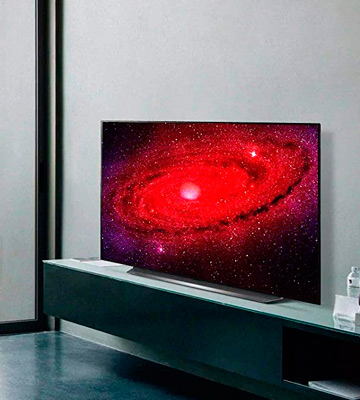
![Samsung (QN55Q80TAFXZA) [Q80 Series] 55 OLED 4K UHD Smart HDR TV (2020 Model) - Bestadvisor Review of Samsung (QN55Q80TAFXZA) [Q80 Series] 55 OLED 4K UHD Smart HDR TV (2020 Model)](http://cdn.bestadvisor.com/reviews/e6/8a/e68ad06bfd1da7267f1829dc970567ee.jpg)
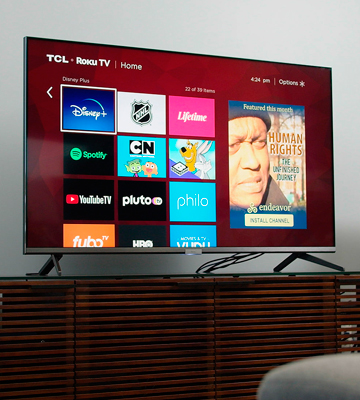
![Samsung (QN50Q60TAFXZA) [Q60T Series] 50 OLED 4K UHD Smart HDR TV (2020 Model) - Bestadvisor Review of Samsung (QN50Q60TAFXZA) [Q60T Series] 50 OLED 4K UHD Smart HDR TV (2020 Model)](http://cdn.bestadvisor.com/reviews/ce/88/ce881a49014e23c8691a16ab73973e75.jpg)

Your comment was successfully sent
Error! Please try again later